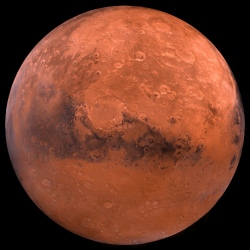
The ESA’s director general said he expected to have at least an interim report for member states when they meet to discuss future plans in a fortnight’s time. Attention is focussed on how the probe interpreted sensor readings during its ill-fated descent to the Red Planet. Schiaparelli’s parachute and rocket system did not behave as expected.
The former was jettisoned too early and the latter fired for too short a period. "The onboard computer had some problems taking data from different sources, and defining correctly the altitude; and because of that the engines were started for only three seconds which was not enough," explained Prof Jan Woerner.
"When the parachute was deployed, it worked. But then some acceleration happened that we do not understand. Was it that the parachute did not deploy fully? We do not know."
Esa and industry experts are reviewing the telemetry, which the DG said the probe continued to transmit right up to the moment of its catastrophic impact with Mars’ equatorial Meridiani Plain.
A Schiaparelli mishap report is just one of the topics delegations will discuss when they meet on 21/22 November to review the status of the ExoMars programme – the joint venture Esa is running with Russia to explore the Red Planet.
